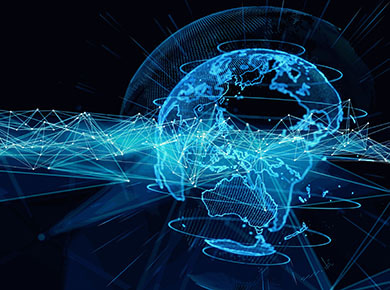IoT shifts computing from the cloud to the edge
Just as the enterprise adjusts to the cloud, along comes the edge.
March 23, 2020

IoT is the latest technology disrupting the status quo. IoT are all physical objects that connect to the internet and exchange data, such as thermostats, security cameras, vehicles, security cameras—you name it.
IoT was originally developed to solve a problem: computers were very good at processing data that humans inputted, but humans couldn’t input data fast enough or accurately enough. IoT may have been in the works for decades, but the pace of development has been phenomenal since the democratisation of technology. Today it touches all industries from the motor car industry to the healthcare sector, and it has found its way into our homes and offices.
The speed to production of connected objects has been unprecedented. Gartner puts the number of connected items in 2017 at nine billion, up from one billion just eight years previously. By 2021, they predict that one million new IoT devices will be sold every hour. As the digital and “real” world converge and experiences become increasingly more immersive, the proliferation of data being collected is unparalleled.
What is edge computing?
With this upsurge in data being collected, it is becoming increasingly necessary to find a more efficient means of sorting, processing and analysing said data. Edge computing is computing resources that are deployed remotely at the ‘edge’ of an enterprise such as an office, a shop, a hospital or a factory and the ‘thing’ which is transmitting data. These computing resources—servers, storage, software and network connectors—are decentralised from central data centres. It is here, at the edge, that data is then processed.
Edge computing differs from traditional distributed computing because it is connected to IoT such as remote sensors, tablets and smartphones. In the absence of edge computing, data would first be sent to the cloud where it is processed and analysed before being returned. With edge computing, that data is scrutinised and analysed at the site of production and only relevant data is sent to the cloud to be stored.
The digital business
This is beneficial to the business for a number of reasons, including time saved analysing data, downsizing storage volumes and making it easier to abide security and data privacy regulations.
Gartner’s digital business is the new business design where digital and physical worlds are blurred. It is the interaction of people, businesses and intelligent ‘things.’ When this physical and digital convergence happens, business moments occur— “transient opportunities in which people, data, businesses and things work together dynamically to create value.” (Thomas J Bittman, VP and Distinguished Analyst, Gartner)
These moments are lost as current data processing methods are sluggish. Immersive experiences, such as augmented and virtual reality, are creating real-time, unpredictable interactions, but latency, regulation and storage slow down the business’ ability to capture the moments.
What should businesses do to prepare for edge computing?
Gartner predicts that by 2022, as a result of digital business projects, 75 per cent of enterprise-generated data will be created and processed outside the traditional, centralised data centre or cloud.
In order to start preparing, Gartner recommends businesses should:
- Address emerging digital business requirements by developing an infrastructure strategy that includes edge computing.
- Identify skills and operational changes needed for future projects.
- Prepare the infrastructure and operations teams for edge computing by identifying required skill sets, training and hiring where needed.